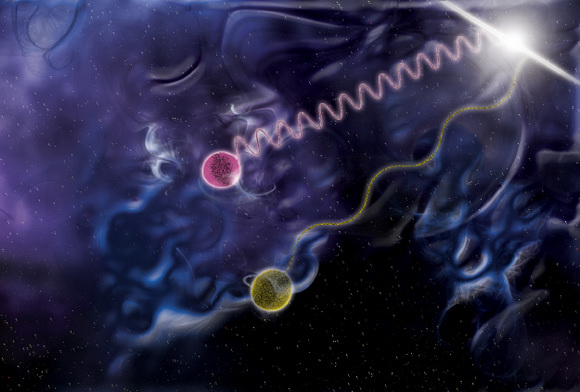The two best theories we have, today, in physics – the Standard Model and General Relativity – are mutually incompatible; loop quantum gravity (LQG) is one of the best proposals for combining them in a consistent way.
General Relativity is a theory of spacetime, but it is not a quantum theory. Since the universe seems to be quantized in so many ways, one approach to extending GR is to quantize spacetime … somehow. In LQG, space is made up of a network of quantized loops of gravitational fields (see where the name comes from?), which are called spin networks (and which become spin foam when viewed over time). The quantization is at the Planck scale (as you would expect). LQG and string theory – perhaps the best known of theories which aim to both go deeper and encompass the Standard Model and General Relativity – differ in many ways; one of the most obvious is that LQG does not introduce extra dimensions. Another big difference: string theory aims to unify all forces, LQG does not (though it does include matter).
Starting with the Einstein field equations of GR, Abhay Ashtekar kicked of LQG in 1986, and in 1988 Carlo Rovelli and Lee Smolin built on Ashtekar’s work to introduce the loop representation of quantum general relativity. Since then lots of progress has been made, and so far no fatal flaws have been discovered. However, LQG suffers from a number of problems; perhaps the most frustrating is that we don’t know if LQG becomes GR as we move from the (quantized) Planck scale to the (continuum) scale at which our experiments and observations are done.
OK, so what about actual tests of LQG, you know, like in the lab or with telescopes?
Well, there are some, potential tests … such as whether the speed of light is indeed constant, and recently the Fermi telescope team reported the results of just such a test (result? No clear sign of LQG).
Interested in learning more? There is a lot of material freely available on the web, from easy reads like Quantum Foam and Loop Quantum Gravity and Lee Smolin’s Loop Quantum Gravity, to introductions for non-experts like Abhay Ashtekar’s Gravity and the Quantum, to reviews like Carlo Rovelli’s Loop Quantum Gravity, to this paper on an attempt to explain some observational results using loop quantum gravity (Loop Quantum Gravity and Ultra High Energy Cosmic Rays).
As you’d expect, Universe Today has several articles on, or which feature, loop quantum gravity; here is a selection What was Before the Big Bang? An Identical, Reversed Universe, Before the Big Bang?, and Before the Big Bang.
Source: Wikipedia


